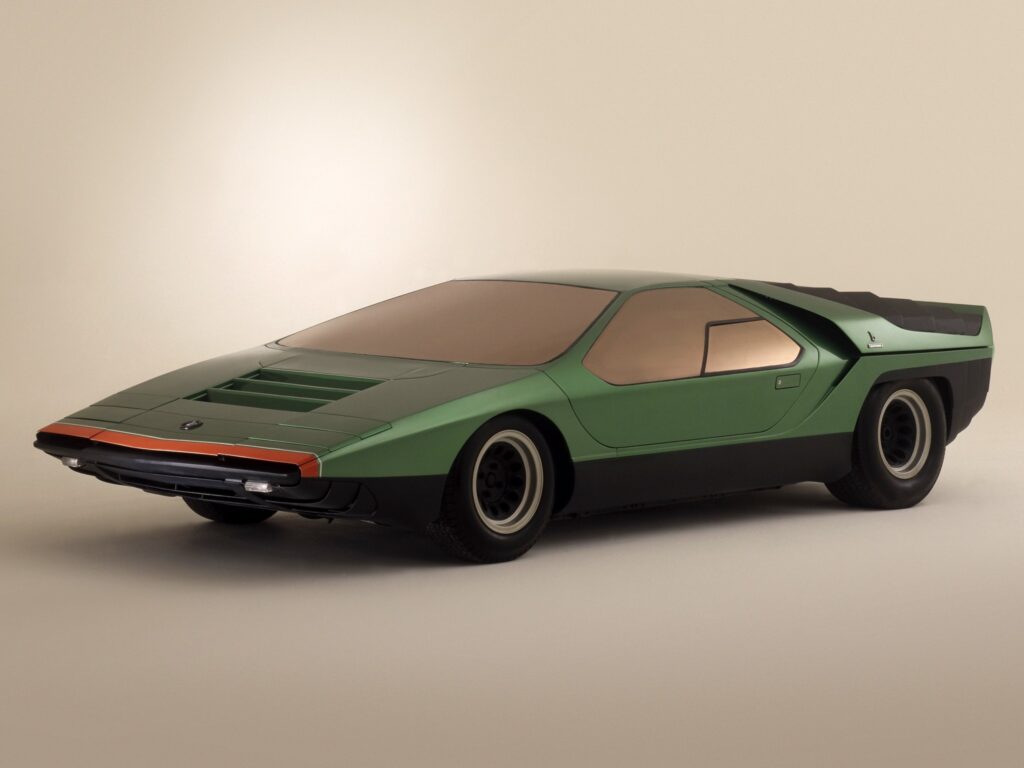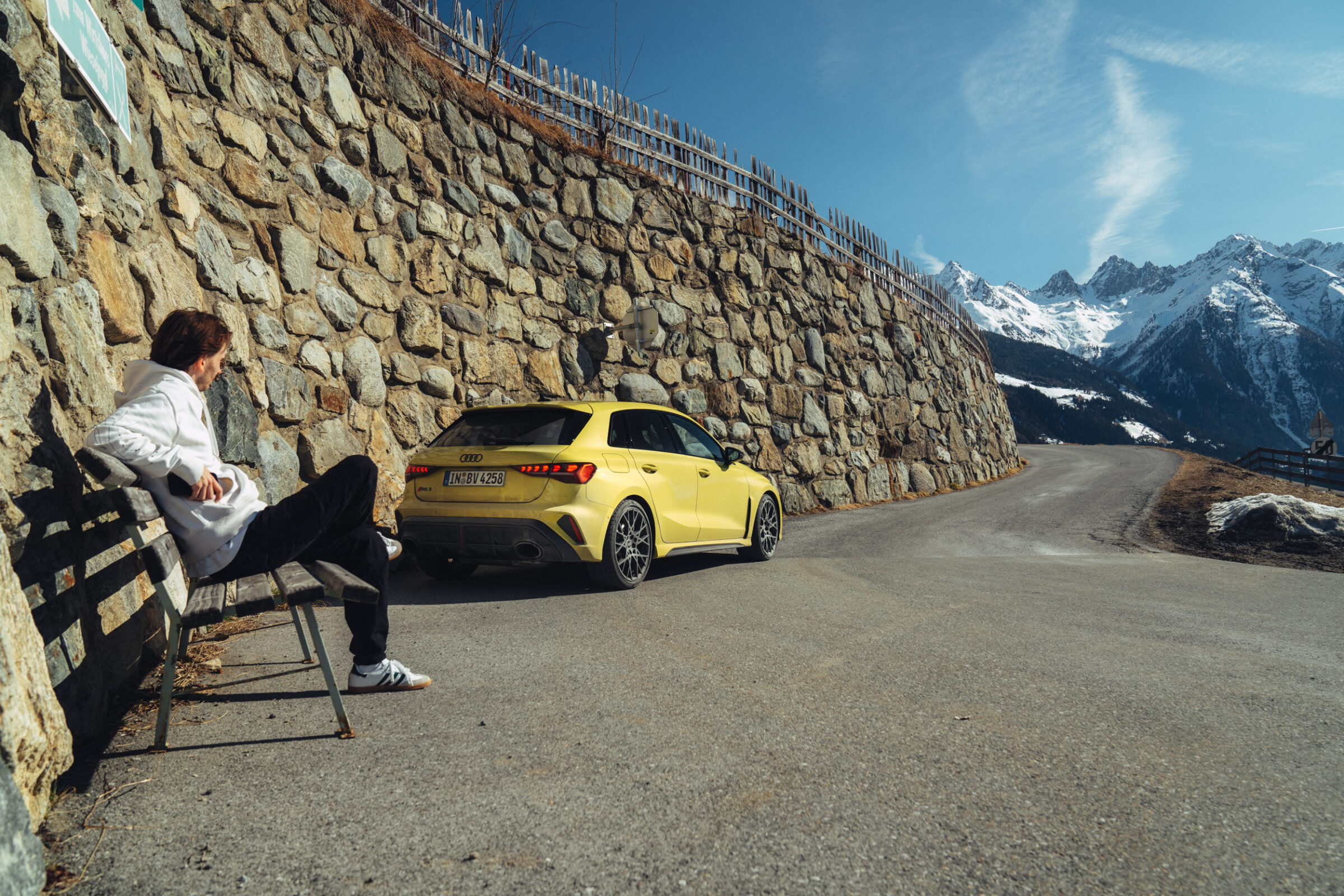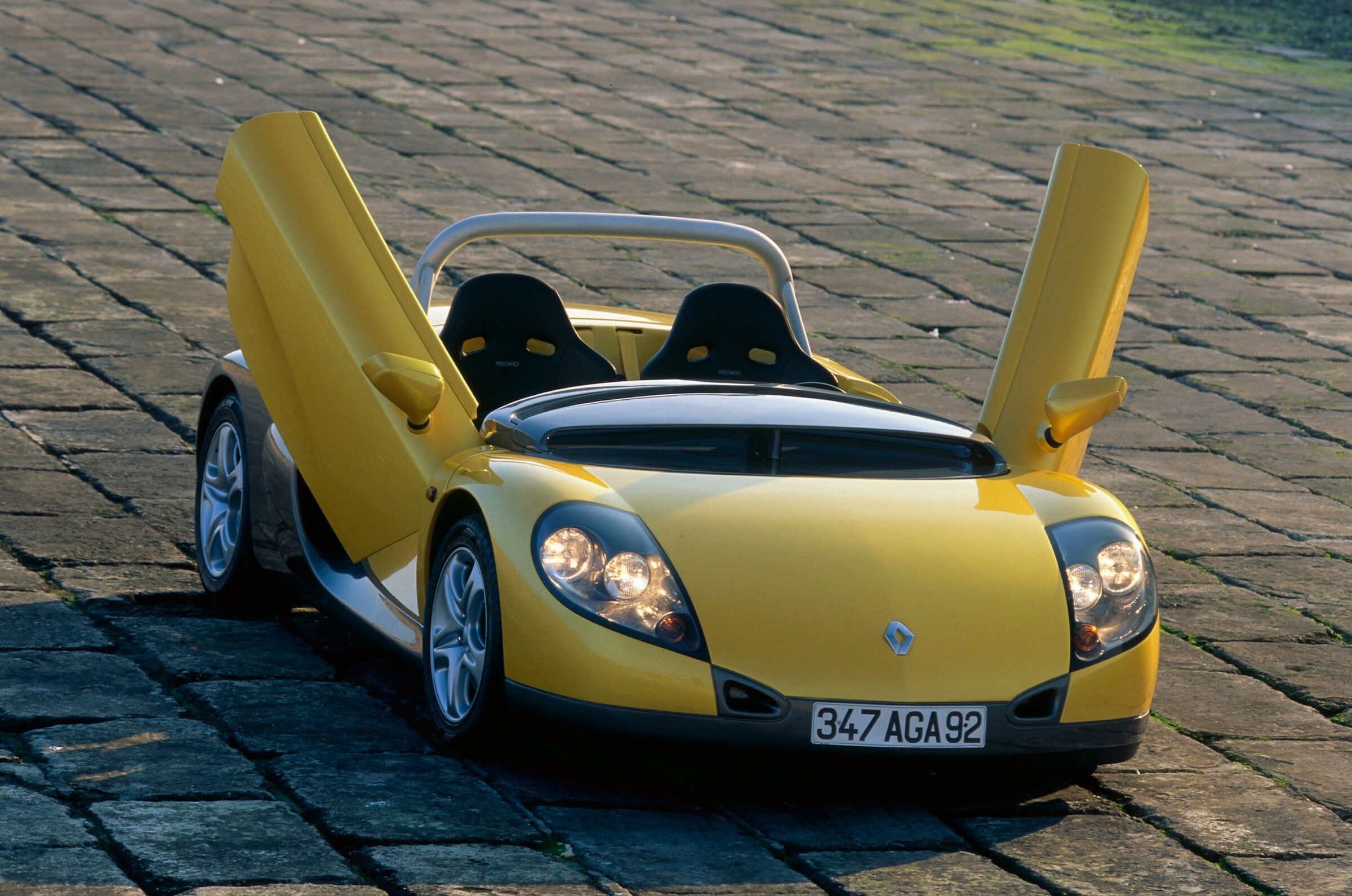Italian wedge by Marcello Gandini – Alfa Romeo Carabo
The Alfa Romeo 33 Stradale was undoubtedly one of the most beautiful cars of all time. Of course, this beauty was already recognised when the sports car was still new. However, due to the high price and the comparatively marvellous racing car technology, there were apparently still unused chassis lying around at Autodelta, which were sold to external coachbuilders. One platform, including functioning drive technology, went to Bertone, where a certain Marcello Gandini was already head designer at the time, aged just 30.
Designed by Gandini

In contrast to the organically rounded 33 Stradale, he now wanted to create a futuristic sports car with a strictly geometric shape. In this way, the Carabo was created as a wedge-shaped concept study that could hardly have been more different from its technical basis. The Alfa Romeo Carabo celebrated its world premiere on the Bertone stand at the 1968 Paris Motor Show.
Technically, Bertone did not make any changes to the delivered chassis. Both the wheel suspensions and the six-speed gearbox from Colotti and the two-litre V8 engine with 230 hp were taken directly from the 33 Stradale, where they enabled a top speed of 260 km/h and an acceleration time to 100 km/h of under six seconds. On the other hand, the Bertone Carabo has a slightly flatter body, with a pointed snout that almost wants to split the airstream. For the first time, Gandini experimented with so-called scissor doors that opened upwards and forwards. This design feature was later found again in the Lamborghini Countach.
Inspiration for the Lamborghini Countach
He even immortalised this detail in the model lettering of the Carabo. The name of the sports car was taken from the gold-coloured beetle (carabus auratus), whose iridescent green Bertone imitated on the bodywork. A bright orange stripe runs along the front, while the rear end was dipped in neon green. Three narrow flaps open above the headlights on each side to let light out at night. At the rear, the lights are embedded in a field of strictly geometric rectangles.


The interior directly in front of the racing engine is both spartan and futuristic. The driver and front passenger sit on fixed seats which, like the door panels, centre tunnel and dashboard, are upholstered in black suede. Behind the deeply cupped two-spoke steering wheel, Gandini chose an unusual arrangement for the instrumentation. While the rev counter is angled in at the far left of the dashboard, the speedometer sits opposite it at the other end, just in front of the passenger door. Five additional instruments are located centrally under the windscreen. Air vents were integrated between them and the outer instruments. The front section of the centre tunnel was designed as a console and houses a total of six switches and the ignition lock. The golf ball look of the gearstick lever was found again around a decade later in the VW Golf GTI.


Today, the Bertone Carabo is one of many unique vehicles in the collection of the Alfa Romeo Museo Storico. This is located in the old Alfa Romeo factory buildings in Arese. The museum is always worth a visit and can be wonderfully integrated into a summer holiday in Italy.
Photos: Alfa Romeo





